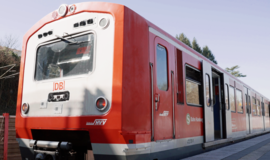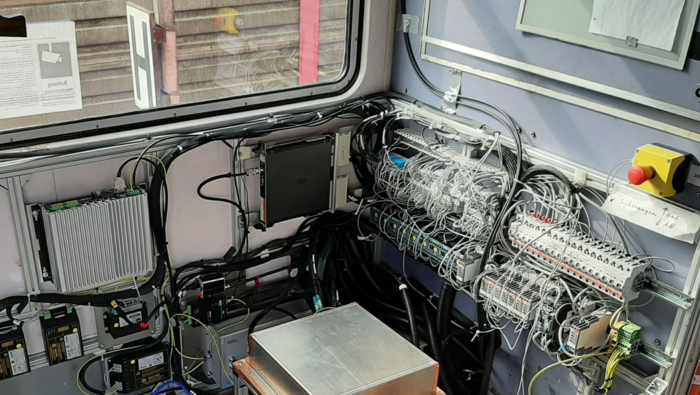
Fourteen eyes on the road ahead: second Sensors4Rail test project successful
In the Sensors4Rail pilot project, state-of-the-art sensors that can ‘see’ the area around a train have been tested extensively on a specially equipped Hamburg S-Bahn train (overground public transport). By comparing sensor information with a digital map, it’s possible to locate trains precisely and, together with other digital rail technologies, shorten distances between trains. This helps increase the network’s capacity. The results will be demonstrated in a live showcase at the ITS (Intelligent Transport Systems) World Congress in October of this year.
A Sensors4Rail test train has been equipped with the necessary testing sensors, as well as the latest software release for reporting and compiling sensor data. After a first test campaign in January 2021, a second was successfully carried out in March 2021.
Fourteen sensors act as the ‘eyes’ of the train. They use radar, Lidar and camera systems (visible light and infrared) to record information about the areas in front of and beside the train. In addition to perceiving oncoming trains and platform conditions, the sensor system can also identify landmarks such as catenary masts, bridges, buildings and rails. This data is stored in a ‘HD card’ in the IT backend and can be downloaded and cached by the train before a journey. Precise train positioning is made possible by a sensor data ‘fusion’ – using Global Navigation Satellite System (GNSS) data and comparisons between landmarks in the digital HD map.
The new software release was tested extensively in test drives between Berliner Tor and Aumühle stations. These were carried out under different conditions, for example daytime and nighttime. The aim of the second test project was, on one hand, to put the technology through its paces, and on the other, to record new data that will enable further system development.
Through the successful completion of both tests, any system errors were identified – and will now be fixed for the following release. Ensuring short intervals between development and test phases allows for fast response times, which, in turn results in efficient software development.
Inside the train, it is clear that it no longer resembles a normal S-Bahn. Computers, cabling, onboard localisation units and a powerful fusion computer now take up part of the space where there were once benches. A separate ‘data logging server’ – a network of many SSD hard drives – stores the huge amounts of data created. This is where the data collected by the train's sensor-based ‘eyes’ is collected so that it can be used in areas such as technical analysis, training machine learning processes and further development of the overall system.

Sensors4Rail is a joint project powered by the rail expertise of DB and Siemens Mobility. Bosch Engineering and Ibeo Automotive Systems, leaders in the automotive sector, are developing sensors and software for environmental perception and localisation. HERE Technologies brings HD mapping and delivery expertise.
Results of the Sensors4Rail pilot project will be presented in October 2021 at the ITS World Congress 2021 in Hamburg, in a live showcase. This will be broadcast via live stream and on Digitale Schiene Deutschland’s (DSD) Germany social media channels.